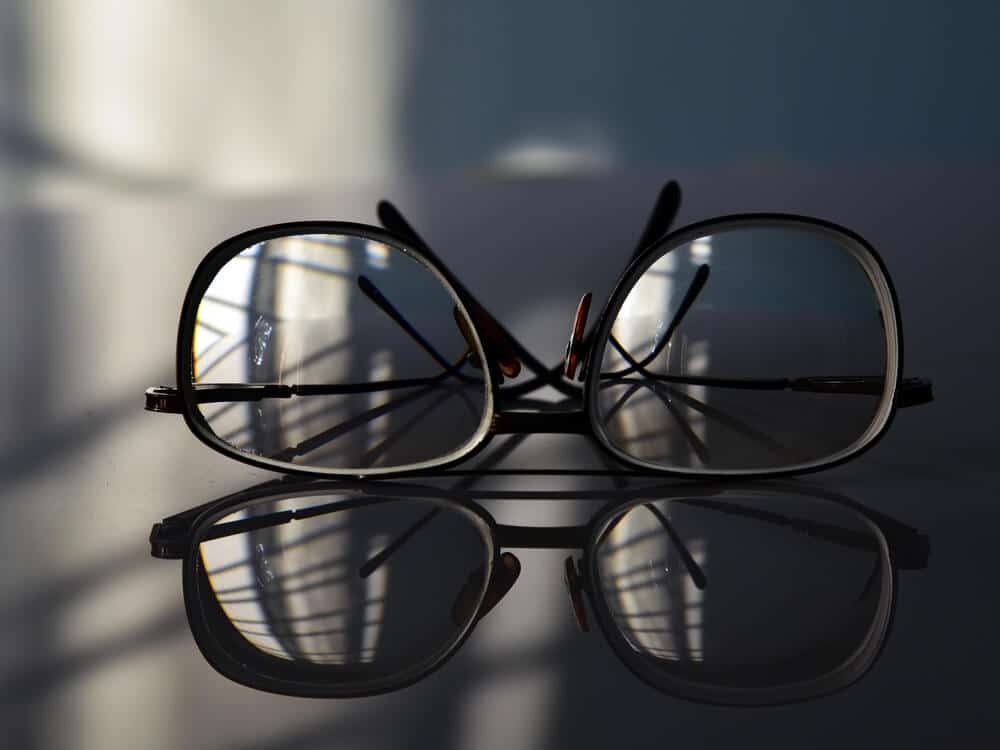Glasses help you see because the lenses bend light. People who need more vision correction typically have thicker lenses because they need more glass to bend the light.
High-index lenses make glasses thinner and lighter. If you’re tired of bulky lenses weighing on the bridge of your nose, you’ll love how high-index lenses feel. People with strong prescriptions can choose high-index lenses instead of needing thick glass in their frames.
People with various vision problems can benefit from high-index lenses. If you’re farsighted or nearsighted, consider getting your next glasses with high-index lenses. This type of glass is also beneficial for people with astigmatism and presbyopia.
Choosing the right lens for your glasses will impact your life in many ways. You’ll be able to see clearly without heavy frames on your face. You’ll also have more choices regarding frames and style. Read on to learn about high-index lenses and see if they’re right for you.

What Are High-Index Lenses?
High-index lenses get their name from the refractive index. The lens index of regular plastic options is 1.50. This number is suitable for many glasses wearers, but not everyone. For people with eye prescriptions over 2.00, high-index lenses are more efficient. These lenses have a refractive index of over 1.50.
Because high-index lenses are so thin, you can get a refractive index of 1.74, and it’s half as thick as a standard lens at the same prescription. You can usually tell the lens index with high-index options because the name includes the refraction. High-index lenses include standard 1.61, 1.67, and 1.74 options.
The higher the refractive index, the thinner the lens. For example, a 1.74 high-index lens is about 10% thinner than the 1.67 version.
While regular lenses can improve your vision, even with a strong prescription, you’ll have thicker glass in the frames to help you see properly. After hours of wearing these glasses, you’ll feel the impact on the bridge of your nose and from the earpieces.
High-index lenses are preferable because they work more effectively, meaning you get the same prescription through the thinner glass. Because your frames have less glass, your eyeglasses feel lighter on your face. You can wear your frames longer without experiencing soreness or pain.
Some people think polycarbonate lenses and high-index lenses are the same. Polycarbonate lenses differ because they’re durable plastic, making them lighter. They have a 1.59 refractive index, less than more high-index lenses. When you compare the same prescription in polycarbonate and the high-index, you’ll find the high-index is thinner.
Benefits of High-Index Lenses
There are many benefits to choosing high-index lenses. People with strong prescriptions prefer this option because they can choose lighter glasses with various frames compared to what’s available for thick glass.
Thinner and Lighter Lenses
The biggest perk of high-index lenses is that the glass is thinner and lighter than standard options. Many people like the look of rimless frames, but you can’t choose that style with thick lenses. High-index lenses eliminate that issue, so you can select thinner frames.
Improved Lens Transparency
High-index lenses are as transparent as standard lenses and much clearer than thick glass. There’s less depth to see through, so your vision is much clearer.
Reduced Lens Distortion
High-index lenses use an aspheric design that lessens the curve of the lens. This style reduces the distortion in your glasses. The magnification is less, which improves the appearance of your eyes behind the glasses and what you see through them.
Increased Lens Durability
Many glasses-wearers like to add durability treatments to their lenses. You can choose these options with high-index lenses, regardless of your prescription. Choose options like:
- Anti-reflective coating
- Anti-scratch coating
- UV-protection
Since high-index lenses aren’t as thick as standard options, they’re also more secure in the frame. If you have thick lenses in a regular frame, you risk the lens falling out with use. Choosing high-index lenses means knowing your glass is secure in any type of frame, ensuring your eyeglasses last longer.
Choosing the Right High-Index Lenses
Your optometrist can give you information about the right high-index lenses for your needs. Typically, people with a prescription of +/-4.00 will appreciate how high-index lenses improve their vision without adding weight to their face.
If you have a prescription between +/-4.00 and +/-8.00, your optometrist can recommend 1.67 high-index lenses. High-index lenses of 1.74 are ideal for any prescription above +/-8.00.
People with lower prescriptions can still choose high-index lenses, but they won’t notice all the benefits as someone with a higher need. Your standard lenses usually aren’t as thick and heavy, so the high-index option won’t make much of a difference.
Factors to Consider When Choosing Lenses
You need to choose the right high-index lenses for your prescription. Your optometrist can help you find the right glass that will suit your ideal frames. However, when you’re choosing your lenses, there are a few factors to consider.
Lens Thickness
Lens thickness can impact your frame options when you’re at the optometrist. If your prescription means you have to wear thick glasses, you might want to opt for high-index lenses. You can get glasses with the same prescription that are less than half as thick as standard lenses.
Lens Weight
Since high-index lenses aren’t very thick, they also weigh less. You can wear these glasses all day without experiencing red marks on your nose. Many glasses-wearers also feel sore due to the earpieces. With the lenses weighing less overall, you won’t feel this impact on your ears or temples.
Lens Durability
High-index lenses are thinner than what most glasses wearers know, so you should be careful with your new frames. The lenses are fragile, so handle them gently to prevent scratches or the loss of a lens. You can talk to your optometrist about getting plastic lenses instead of glass if you’re worried about damage.
Lens Protection
Since high-index lenses are more expensive than the standard option, you should protect your investment. Add coatings to increase durability and ensure clear vision so you can wear your glasses for a long time.
If you work on a computer for hours at a time, you can also choose to add a coating that filters blue light. This option protects your eyes from computer vision syndrome.
Lens Transparency
These coatings won’t impact the transparency of your lenses. High-index lenses are just as clear as standard options—in some cases, even more since they’re thinner.
Lens Options
You can choose different types of high-index lenses to suit your lifestyle. Some people need single-vision lenses, while others wear progressive lenses. You can get polarized high-index lenses to wear as sunglasses or choose a light-responsive pair that automatically acclimates based on your surroundings.
Find the Right High-Index Lenses from Art of Optiks

High-index lenses benefit people with strong prescriptions. You can choose this option even if you need special glasses, resulting in thinner lenses and more frame choices. If you need an eye exam to check your prescription, contact Art of Optiks today. We have an experienced care team that can help you find the best lenses for your needs.

